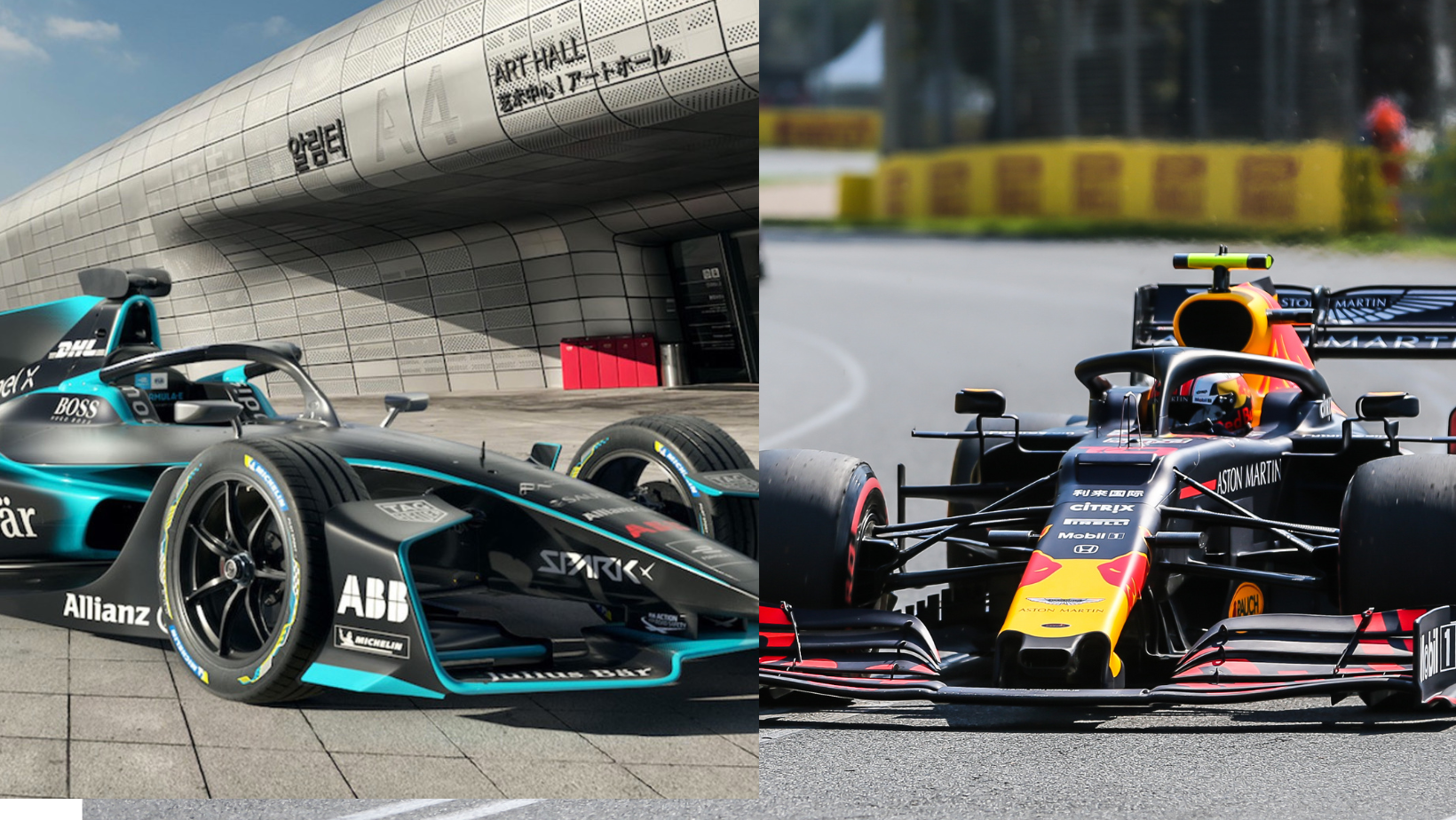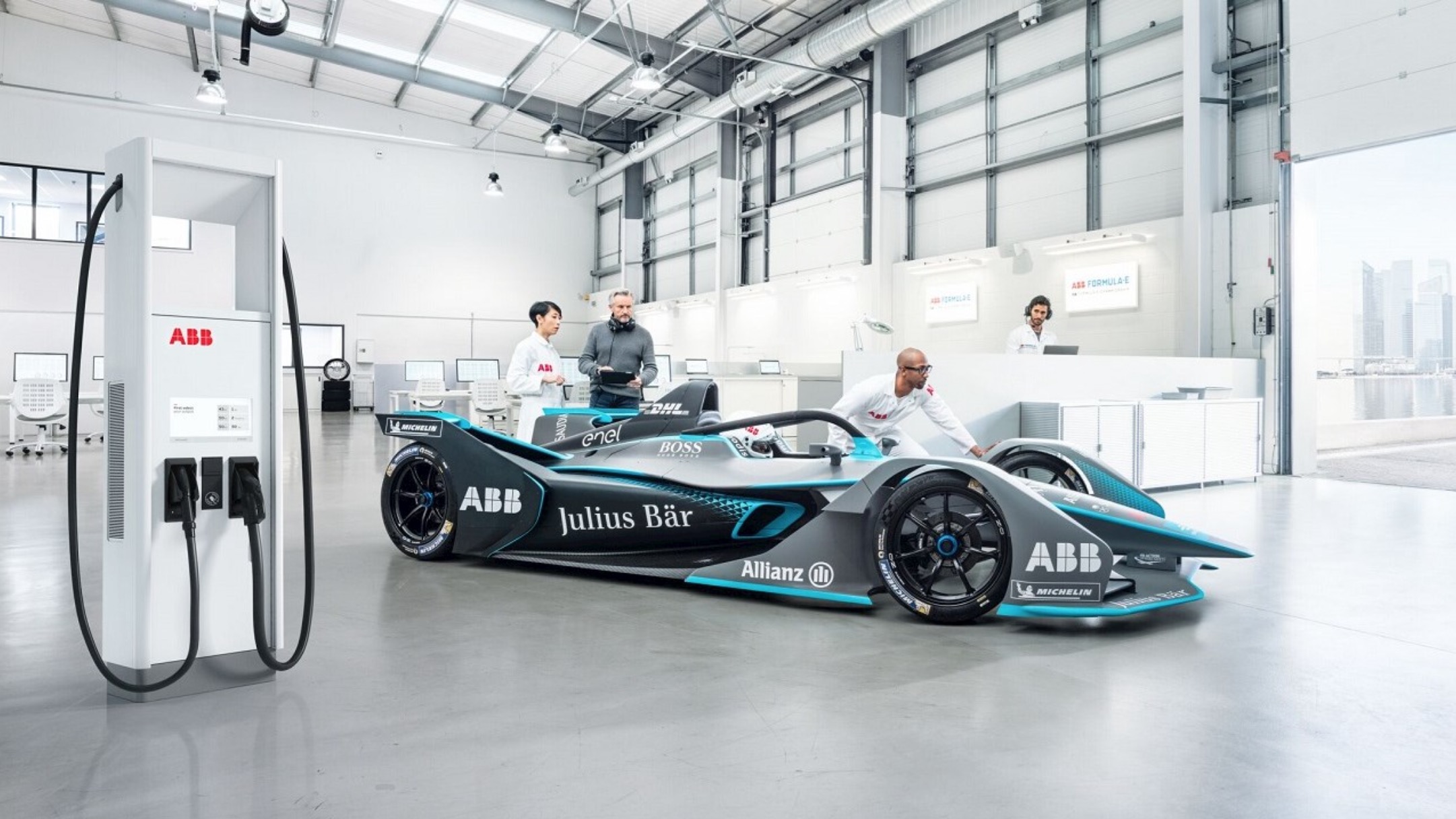Formula 1 and Formula E are two of the most popular forms of motor racing in the world. With their growing popularity, the debate arises of whether Formula 1 or Formula E cars are faster?
What are the differences between Formula 1 vs. Formula E
Both involve high-performance cars and both require a supreme level of skill and dedication from race car drivers. However, there are some key differences between the two series.
Speed: Are Formula 1 or Formula E cars faster?
The obvious difference between Formula 1 vs. Formula E are the type of cars used. Formula 1 cars are powered by 1.6 liter four-stroke turbocharged 90 degree V6 double-overhead camshaft (DOHC) reciprocating engines that produce up to 1050 horsepower, while the Spark Gen3 Formula E race car will produce 600kW of total power between the drive motor at the rear axle, generating 350kW, and the front-mounted standard 250kW motor.
The electric powertrains of Formula E cars provide instant torque and acceleration which make them almost as quick off the line as Formula 1 cars. Formula E race cars can go from 0-60 in slightly under 2.8 seconds. F1 cars accelerate from 0-60mph in about 2.6 seconds, making them the quicker of the two. The top speed of a Formula E car is 174mph (280km/h), while for an F1 car it’s over 186mph (300km/h).
Although a bit outdated… here is a great Formula E vs Formula 1 Drag Race video.
The Difference Between A Formula 1 and Formula Race Track
The tracks used for each series are also quite different.
Formula 1 tracks are typically much longer than Formula E tracks. A Formula 1 race track is designed to be long, wide and fast. These tracks are permanent and often have a variety of corners to challenge drivers, and typically feature long straights to allow cars to reach their top speeds. The track is usually made up of a combination of asphalt and concrete and is engineered for maximum grip and safety. In terms of distance, a Formula 1 race circuit can be about 3-7 miles in total with a total race distance of 160-190 miles.
In contrast, a Formula E track is much shorter than a Formula 1 track. These tracks are designed to be more compact and are often set up on city streets or temporary circuits. The track is usually made up of a combination of concrete and tarmac and is designed to provide a good balance between grip and speed. In terms of time,
Formula 1 races tend to be much lengthier than Formula E races. Formula 1 races usually last about 2 hours unless is a suspension, in which extra time will be added. Formula E races usually last between 45 minutes and one hour.
How much does it cost: Formula 1 vs. Formula E
Finally, the cost of competing in each series is quite different. Formula 1 teams have to spend millions of dollars each year to compete, while the cost of competing in Formula E is much lower.
What about Safety?
Formula 1 Safety Summary
Being the high-speed motorsport that is Formula 1, strict safety rules are needed to ensure the safety of the drivers, track staff, and even fans. The FIA (Fédération Internationale de l’Automobile) is the governing body of Formula 1 and is responsible for setting and enforcing the rules and regulations of the sport, including those related to safety. Some of the safety rules that are followed in Formula 1 include:
- The use of fire-resistant clothing for drivers and track marshals.
- The installation of impact-absorbing barriers around the track.
- The use of medical teams and equipment on site to provide immediate medical attention in case of an accident.
- The use of safeTy cars to slow down the field in the event of an accident or other incident on the track.
- The use of a virtual safety car (VSC) system, which slows down the field when necessary.
- The use of head and neck support (HANS) devices to help protect drivers in the event of a crash.
- The use of high-quality helmet visors to protect drivers’ eyes from debris.
In addition to the FIA, the Grand Prix Drivers’ Association (GPDA) and the teams themselves also play a role in ensuring the safety of Formula 1 drivers. The GPDA represents the interests of the drivers and works to promote safety in the sport, while each team has its own safety team that is responsible for implementing safety procedures specific to that team.
Formula E Safety Summary
Like Formula 1, FIA is responsible for ensuring the safety and fairness of the ABB FIA Formula E World Championship. They organization works closely with Formula E to develop regulations that will create the best race conditions possible, while also ensuring a level playing field for all teams and manufacturers. Currently, FIA’s Formula E Department Director, Frederic Bertrand, works with the championship promoter, teams, and manufacturers to oversee all regulatory aspects of the sport, including race format, circuit design, car development, and spending caps.
The FIA also employs Scrutineers under the guidance of the FIA’s Head of Formula E Technical Matters, Alessandra Ciliberti, to police compliance with technical regulations, and a team of stewards to investigate and make decisions on in-race incidents and driving standards. The stewards have a range of punishments at their disposal, including time penalties, fines, and disqualification.


10 Key Differences between Formula 1 and Formula E
1. Power Source: Formula 1 uses internal combustion engines, while Formula E uses electric motors.
2. Speed: Formula 1 cars are much faster than Formula E cars because the internal combustion engine produces more power than the electric motors.
3. Environment: Formula 1 cars produce a lot of noise and harmful emissions, while Formula E cars are much quieter and produce no emissions.
4. Cost: Formula 1 cars are much more expensive to build because of the complex technology and parts required. Formula E cars are much cheaper to construct and maintain.
5. Racing Style: Formula 1 races usually require multiple pit stops for fuel, tires, and repairs, while Formula E races are shorter and require no pit stops, which means they ride on the same pair of tires.
6. Drivers: Formula 1 drivers are experienced professionals who are paid large salaries, while Formula E drivers are sometimes known to be younger and “less experienced.” However, there have been a few Formula 1 drivers who moved to Formula E. Both Formula 1 and Formula E have high-quality and experienced drivers behind the wheel.
7. Tracks: Formula 1 tracks are usually long and winding, while Formula E tracks are designed to be shorter and more accessible.
8. Safety: Both Formula 1 and Formula E cars must meet strict safety standards. However there are some slight differences. See above!
9. Technology: Formula 1 has many complex technologies such as turbochargers, while Formula E is focused on developing new electric technologies.
10. Popularity: Formula 1 is the more established and popular race series, while Formula E is still in its infancy and gaining popularity.
In conclusion, Formula 1 and Formula E are two of the most popular forms of motor racing in the world. However, they differ in many ways, such as the type of cars used, the length of races, the tracks used, the rules and regulations, the safety regulations, and the cost of competing.




